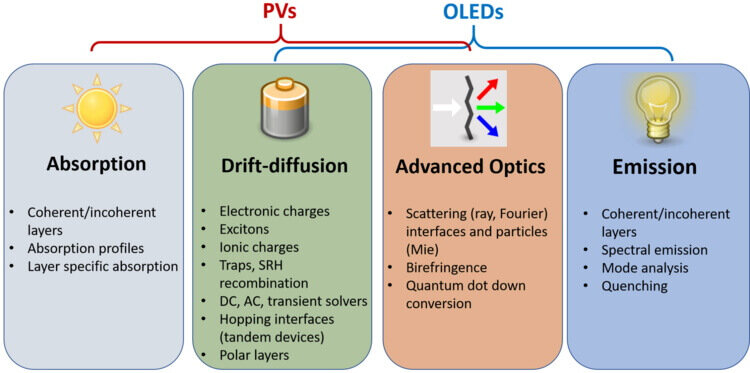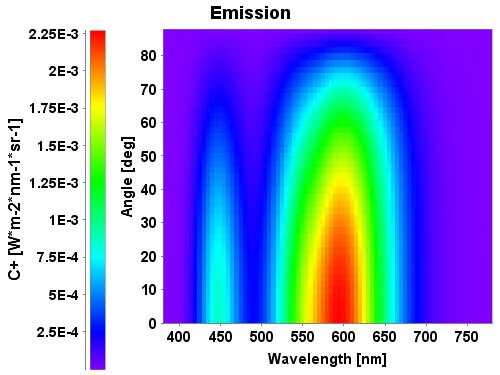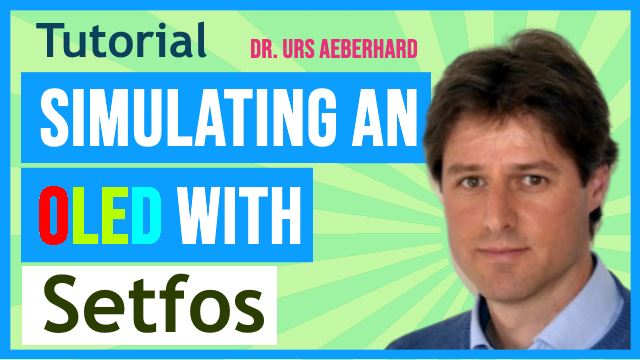SETFOS
Simulation Software for Organic and Perovskite Solar Cells and LEDs
GUI - OLED Simulation - Solar Cell Simulation - Device Optimization - Modules - Brochure

Validate your research with the predictive power of Setfos
Overview
-
Simulation software for optical and electrical modeling of semiconducting devices. Designing LEDs & solar cells based on organic semiconductors, perovskites, and quantum-dots.
-
Four different modules to simulate light emission, absorption, scattering, and charge transport.
-
Multithreading ensuring high-speed computation.
-
Fitting and optimization algorithms are included.
-
Outstanding track record: 15 years in industry and academia resulting in over 200 scientific publications. Sound materials & device models have been successfully validated by dedicated experiments.
-
The Setfos-Paios Integration gives access to combined characterization/simulation in DC, AC, and transient regimes.
Graphical User Interface
-
Intuitive access to device structure, material parameters, working files, simulation output.
-
Optimization Toolbox to maximize the device efficiency.
-
Sweep function to analyze the influence of the material parameters on the device efficiency.
-
Easy access to a library of simulation examples and material property databases.
-
Key graphs and reports are automatically generated. Multiple simulations can run in parallel.
The graphical user interface (GUI) shows the device design and the results from the simulation in intuitive plots. The results can be exported to a number of different formats. Setfos is fully compatible with Python.


OLED Modeling
Setfos simulates OLEDs from charge injection to light extraction. The graphical user interface makes it easy to analyze and improve your devices. Modeling OLEDs from the material selection to the definition of the most efficient stack.
-
Modeling charge transport and recombination with the Drift Diffusion module.
-
Analyze optical emission spectra and wave-guided mode contributions with the Emission Module
-
Design out-coupling layers for efficiency and color stability.
-
Design scattering layers to enhance the light out-coupling with the Advanced Optics Module
-
Advanced device physics: quenching, excitons, traps, doping, AC & transient responses, ...
Simulating an OLED with Setfos
In this video tutorial, Dr. Urs Aeberhard (Fluxim AG / ETH) demonstrates how to design, simulate and optimize an OLED stack.
Solar Cell Modeling
Easily calculate the short circuit current (Jsc), open-circuit voltage (Voc), and fill factor. Tweak the layer stack and add light scattering layers to enhance light absorption.
-
Specific for organic, quantum-dots, and perovskite solar cells.
-
Optimize the device for the AM1.5 (or for specific wavelengths) with the Absorption Module.
-
Curve fitting & parameter extraction. Understanding the origin of the hysteresis in perovskite solar cells.
-
AC simulation of transient experiments, as photo-CELIV. Easy to couple with the electrical characterization systems Paios.
-
Advanced device physics: SRH-recombination, excitons, ...
-
Designing anti-reflection coatings or transparent solar cells.
Simulating a Solar Cell with Setfos
In this video tutorial, Dr. Urs Aeberhard demonstrates how to design, simulate and optimize an organic solar cell.
Parameter Sweep and Device Optimization

Sweep parameters to understand their effect on the device properties.
Setfos contains a powerful optimization engine that can be used to automatically find the device layout that gives the highest efficiency.
You will be able to fit parameters to experimental data from DC, AC, and transient analyses of both solar cells and LEDs.
You can choose between different visualization of the results to interpret easily the obtained data.















